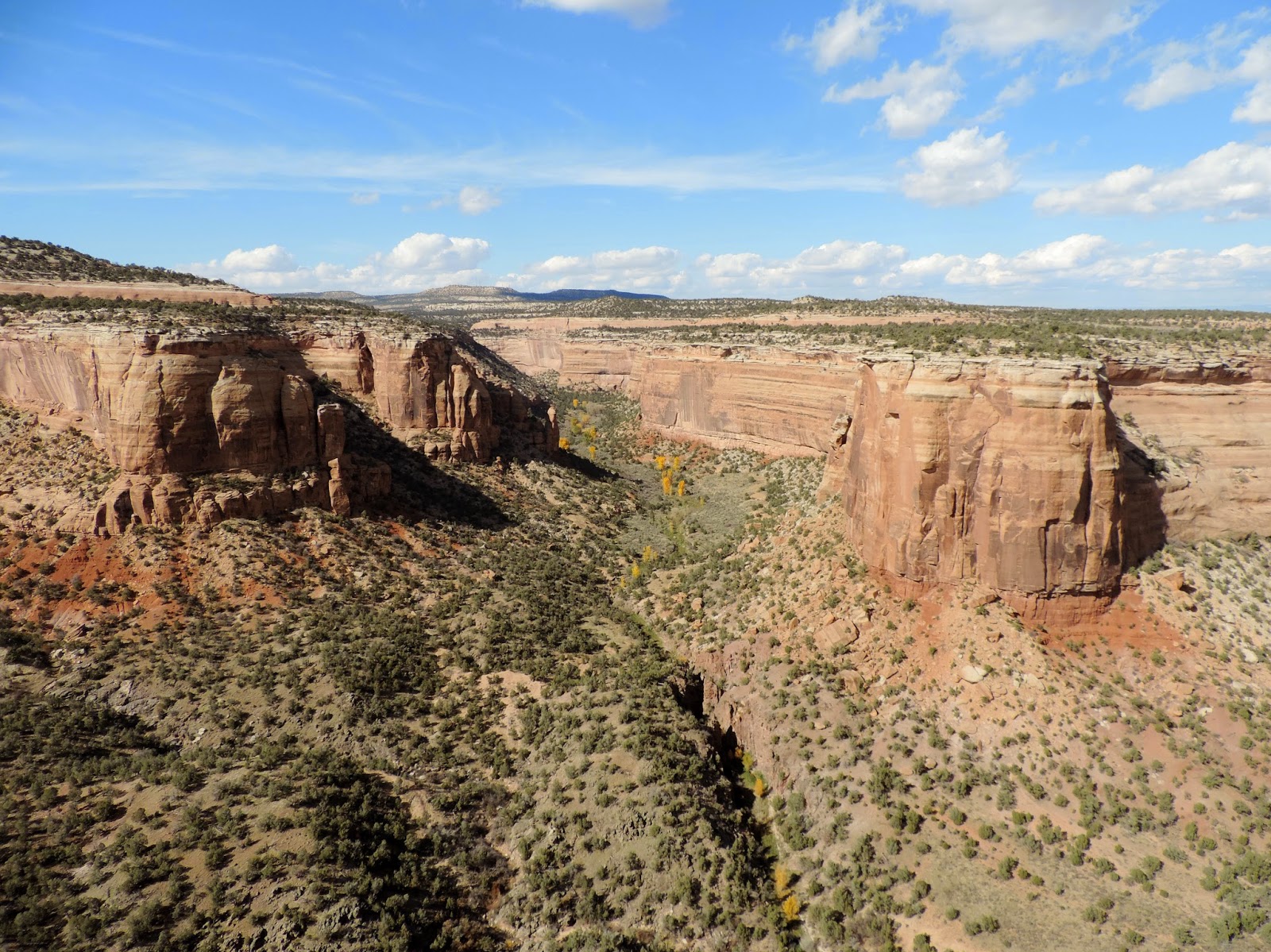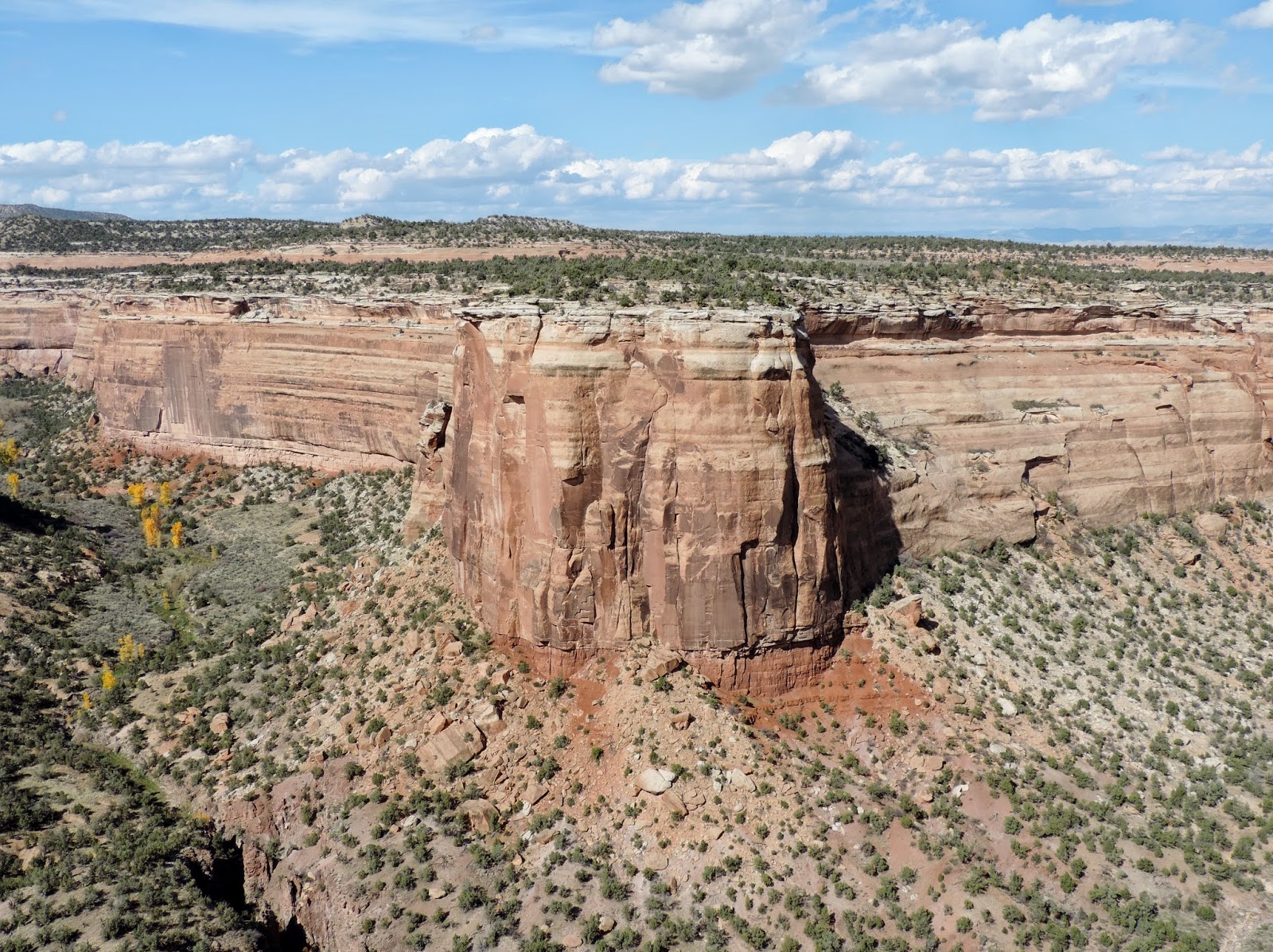The spectrum of color that paints the Monument's landscape is in part due to the color of the minerals in the rocks as well as the kinds of lichens and chemical compounds that coat their weathered surface. Surprisingly colorful lichens are composite organisms made up of a fungi and cyanobacteria of green algae living symbiotically. The fungi partner spreads across the rock providing a stable, moist environment for the cyanobacteria or algae partner which in turn produces nutrients through photosynthesis.
Clay minerals are responsible for a variety of the rock colors including some browns, yellows, blues and greens found in mudstones. Clear quartz grains appear rust-red in the sandstones at the Monument due to a thin coating of iron oxide on each grain. In some areas percolating water has dissolved the iron oxide coating leaving the formerly red sandstone pale and bleached.
Here's a video I took at Artist's Point panning the view showing you a colorful panorama.
Here are more stunning views of the sandstone walls, shapes and other assorted red rock features from Artist's Point.
I think the feature on the left is called "Squaw Fingers" ... you see it, don't you?
On our way back that afternoon we stopped again at one of our previous stops and caught the Independence Monument once again. Otto's Route is a classic tower climb and is still followed every year by hundreds of recreational climbers. After ascending most of the route on Windgate Sandstone, the final push to the top includes a precarious backwards-leaning climb out from under the caprock of Kayenta Formation to the top of the monolith. Initiated by John Otto, the tradition of raising the American flag atop the Independence Monument on the 4th of July continues today.
The large "plateau" to the left of Independence Monument is called "The Island". Sedimentary rocks that make up Independence Monument continue to be slowly eroded by seasonal freezing and melting and by rain, snow and wind.
Upper Ute Canyon Overlook had a really fun feature in store for us! But before I tell you what it was, I'm going to show you some photos from that overlook on the 23-Mile Rim Rock Drive.
This feature on the sandstone wall they call the Egyptian Mummy. Can you see its form? It took me awhile to see it. They really didn't point out where it was, but they did give you a photo of it ... still took me awhile to find it!
A video of this canyon wall that goes on forever with a surprise ending!
Fallen Rock Overlook is quite cool because you actually can see where a huge piece of one of the monoliths in this Monument has actually slid down and fallen off!
A close-up of the fallen rock.
Between Upper Ute and Fallen Rock, we passed the high point of Rim Rock Road.
After Upper Ute was Ute Canyon. Here are some of the spectacular canyon views we saw from this overlook.
This monolith was actually at the head of two canyons--one went off to the left and the other to the right.This is the canyon that went off to the left. You can still see some of the fall foliage twisting along the canyon river bed and hiking path.
Here's a better view of the canyon point where you can actually see the beginnings of the two canyons.
Next on this long list of canyon overlooks is Red Canyon. This canyon basically frames the city of Grand Junction.
We're almost near the end of our 23-mile journey! This is Cold Shivers Point our last overlook on the road. I hope the photos were worth the journey.
And now a fond farewell to this monumental National Monument!
Nahum 1:6-7
Who can stand before His indignation? Who can endure the burning of His anger? His wrath is poured out like fire and the rocks are broken up by Him. The LORD is good, a stronghold in the day of trouble, and He knows those who take refuge in Him.


























No comments:
Post a Comment